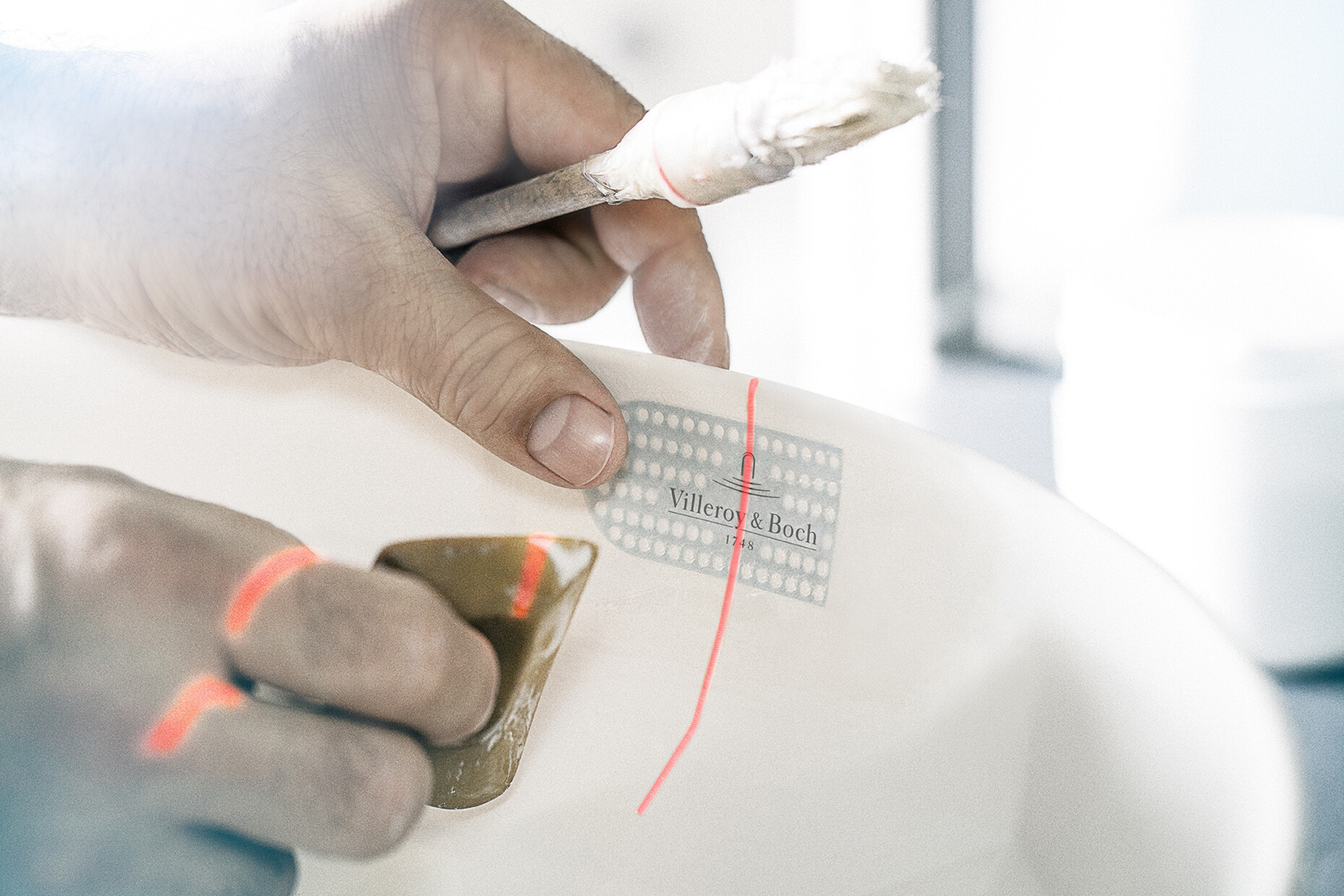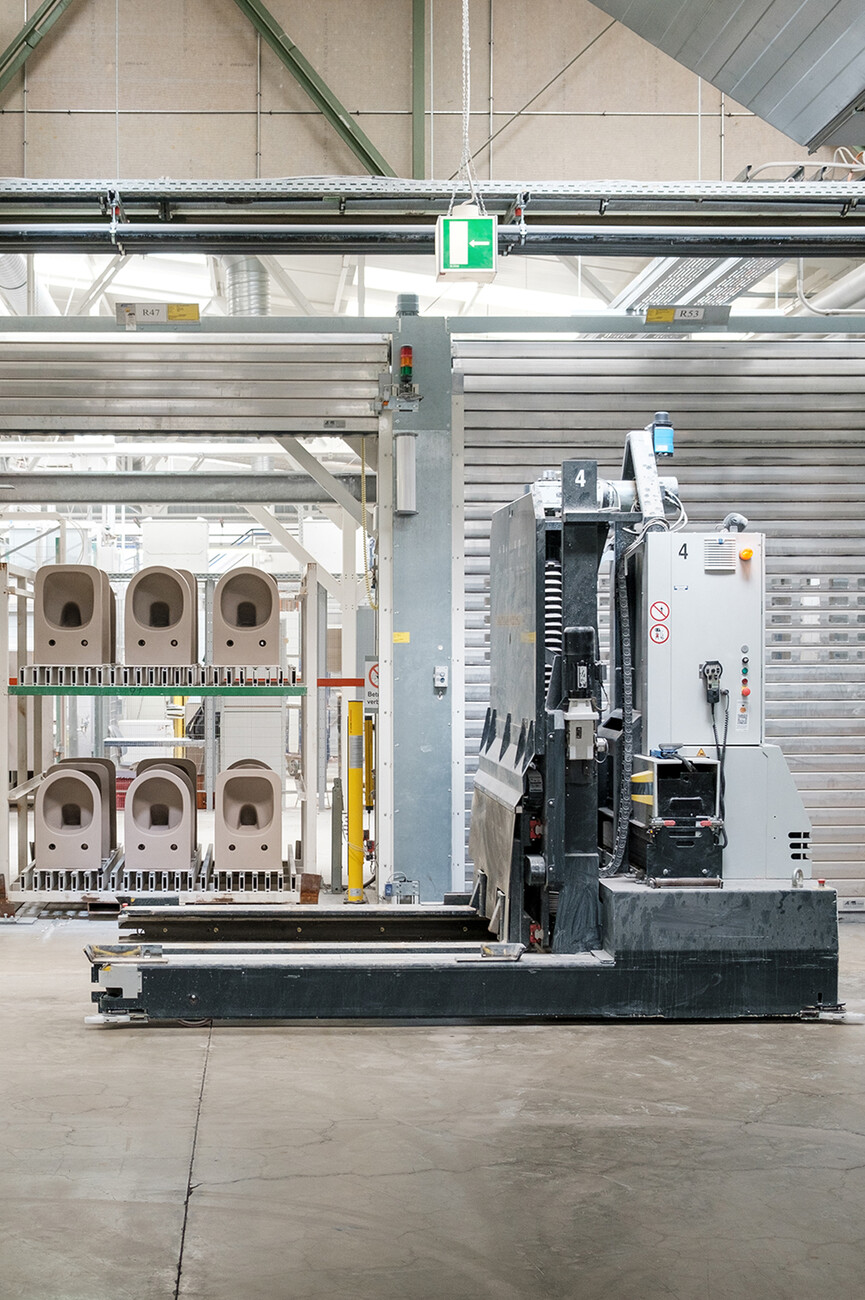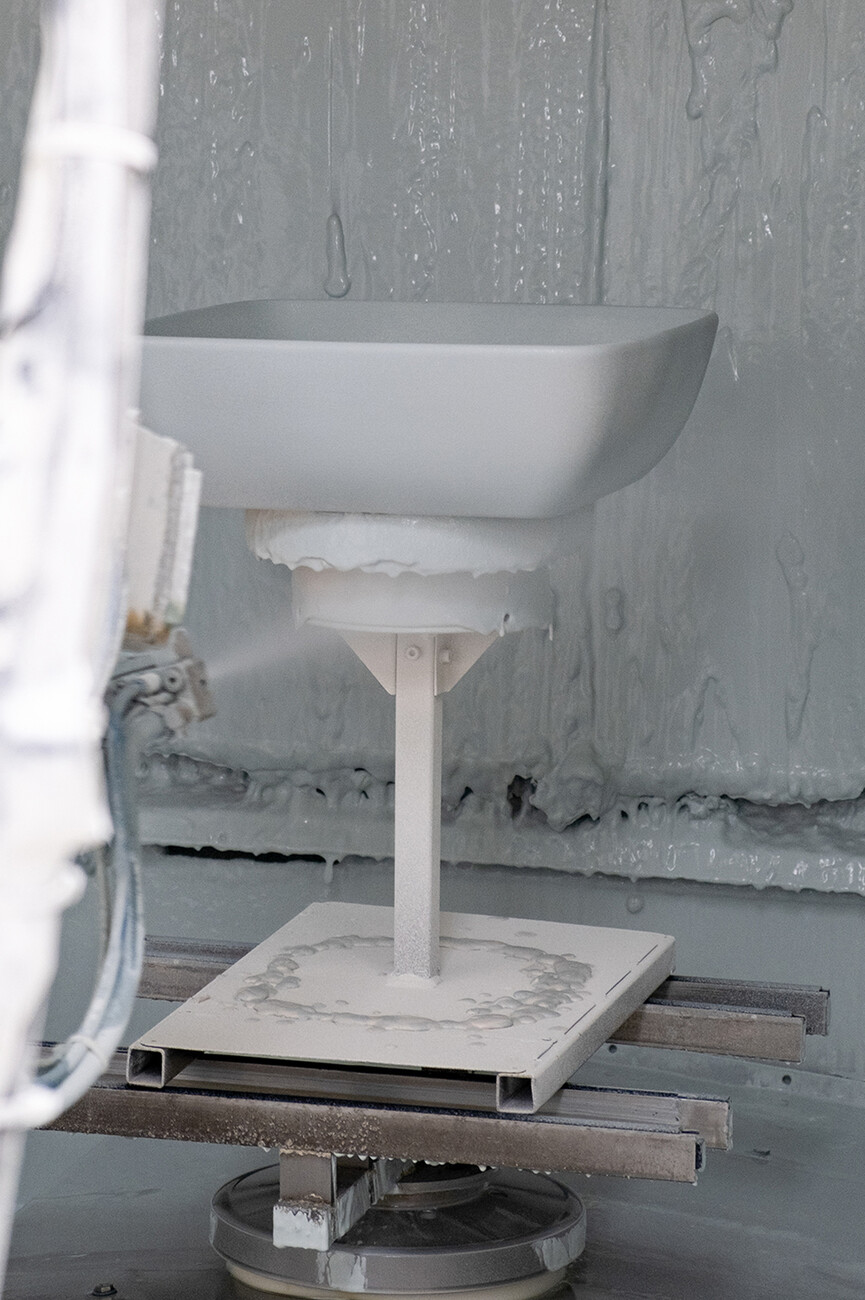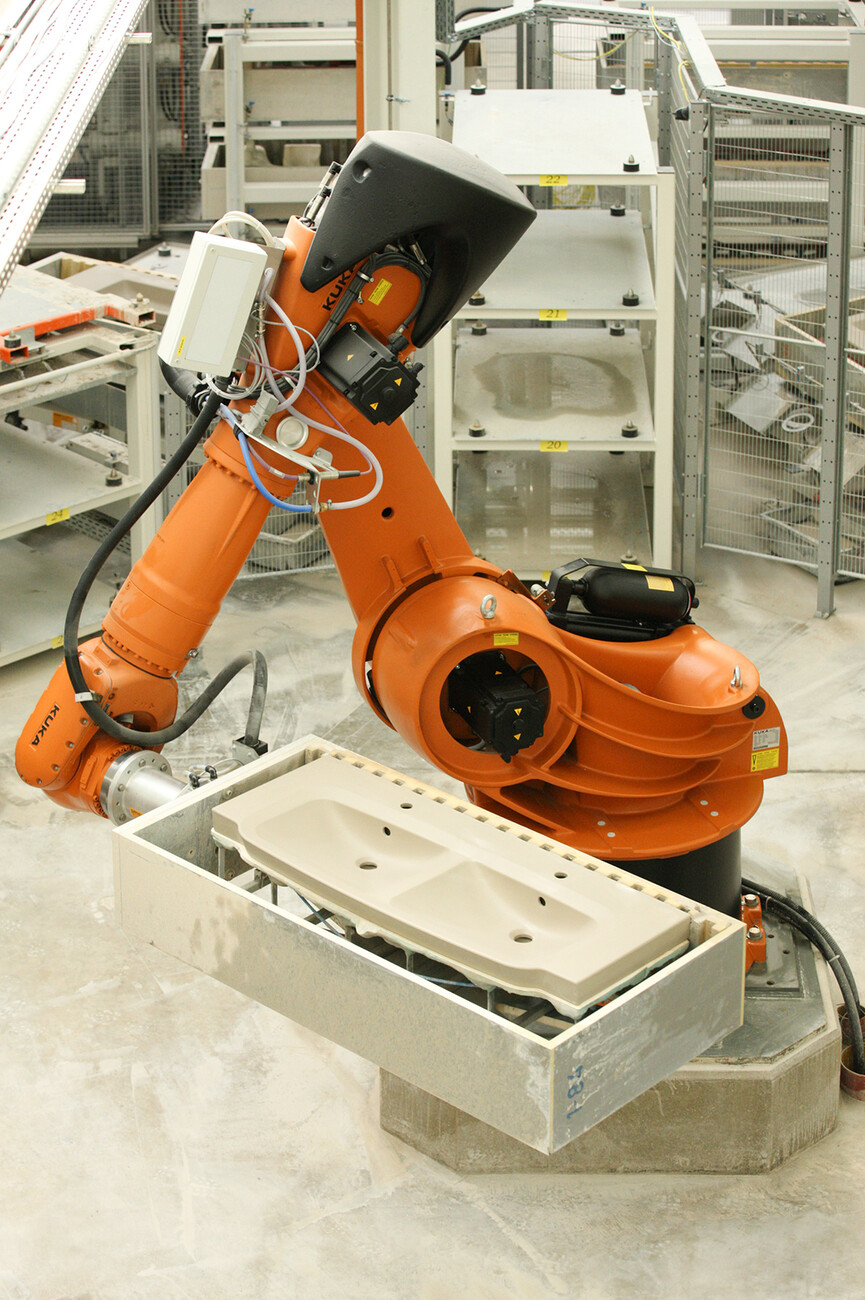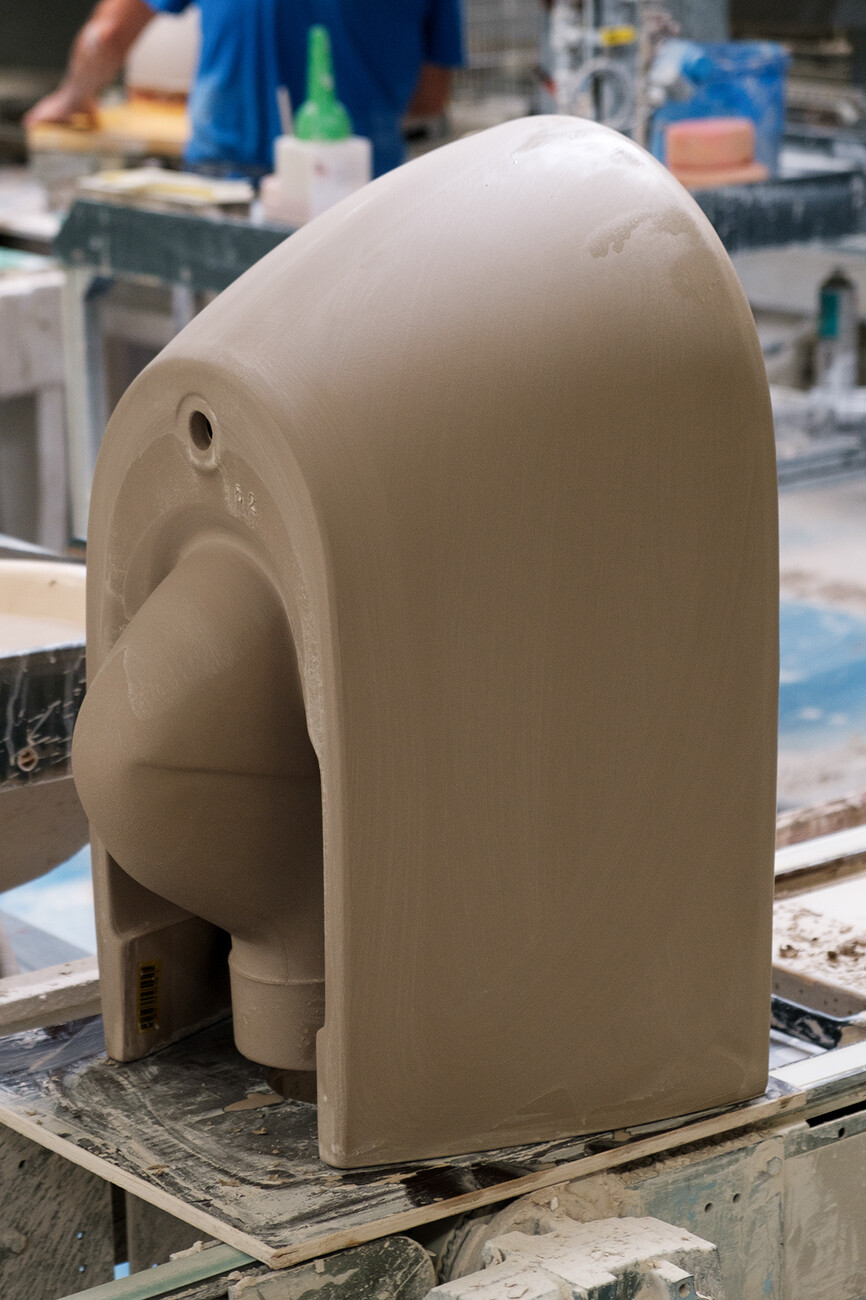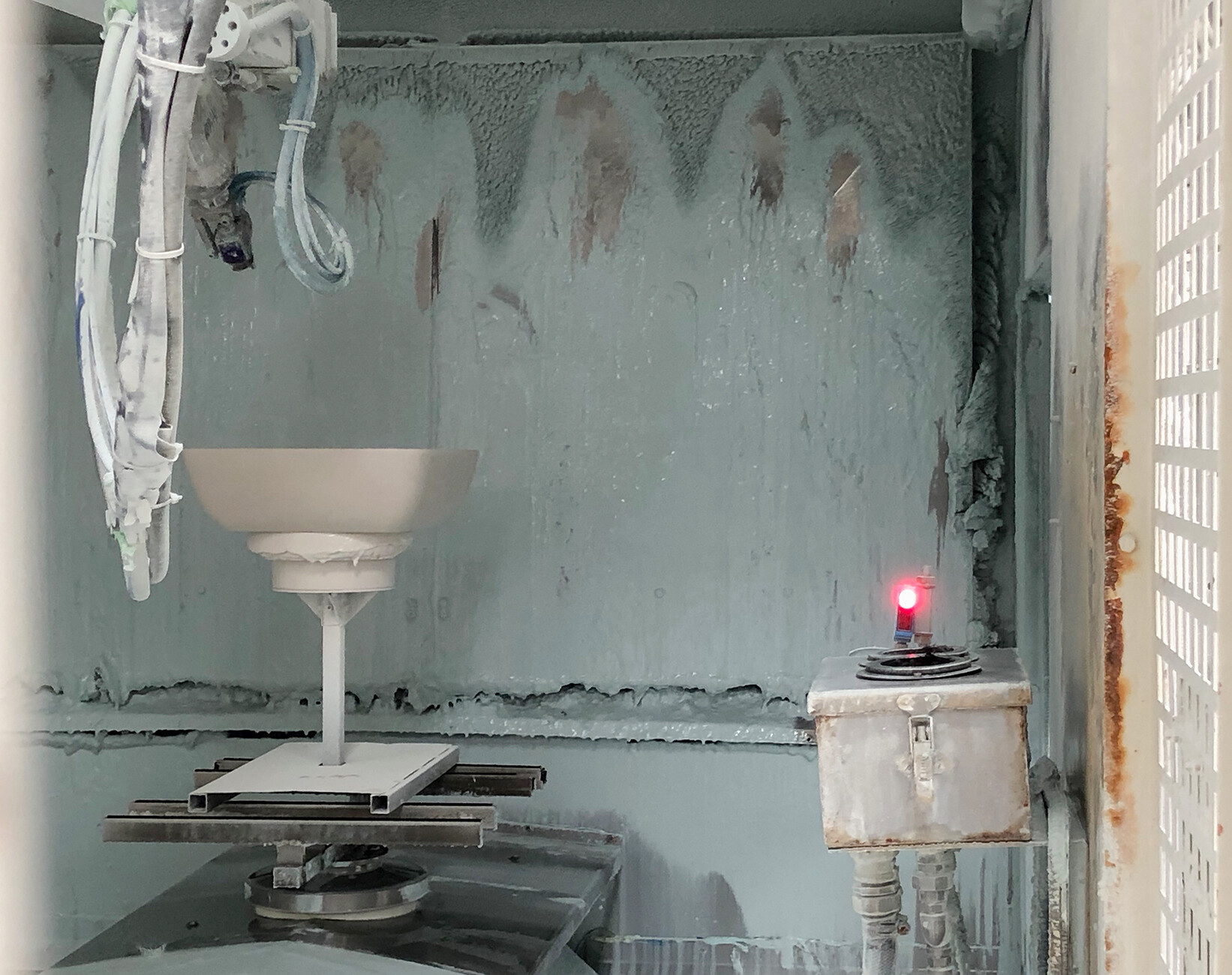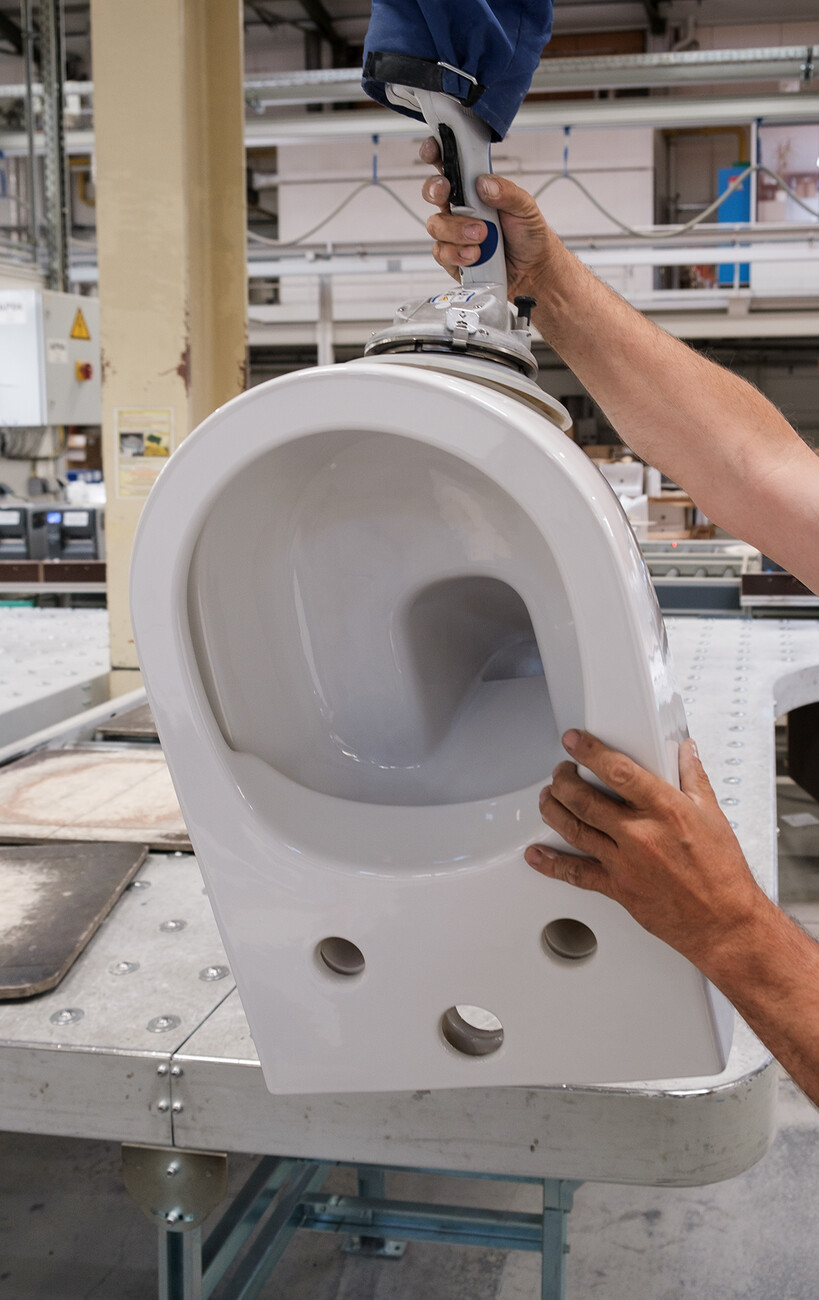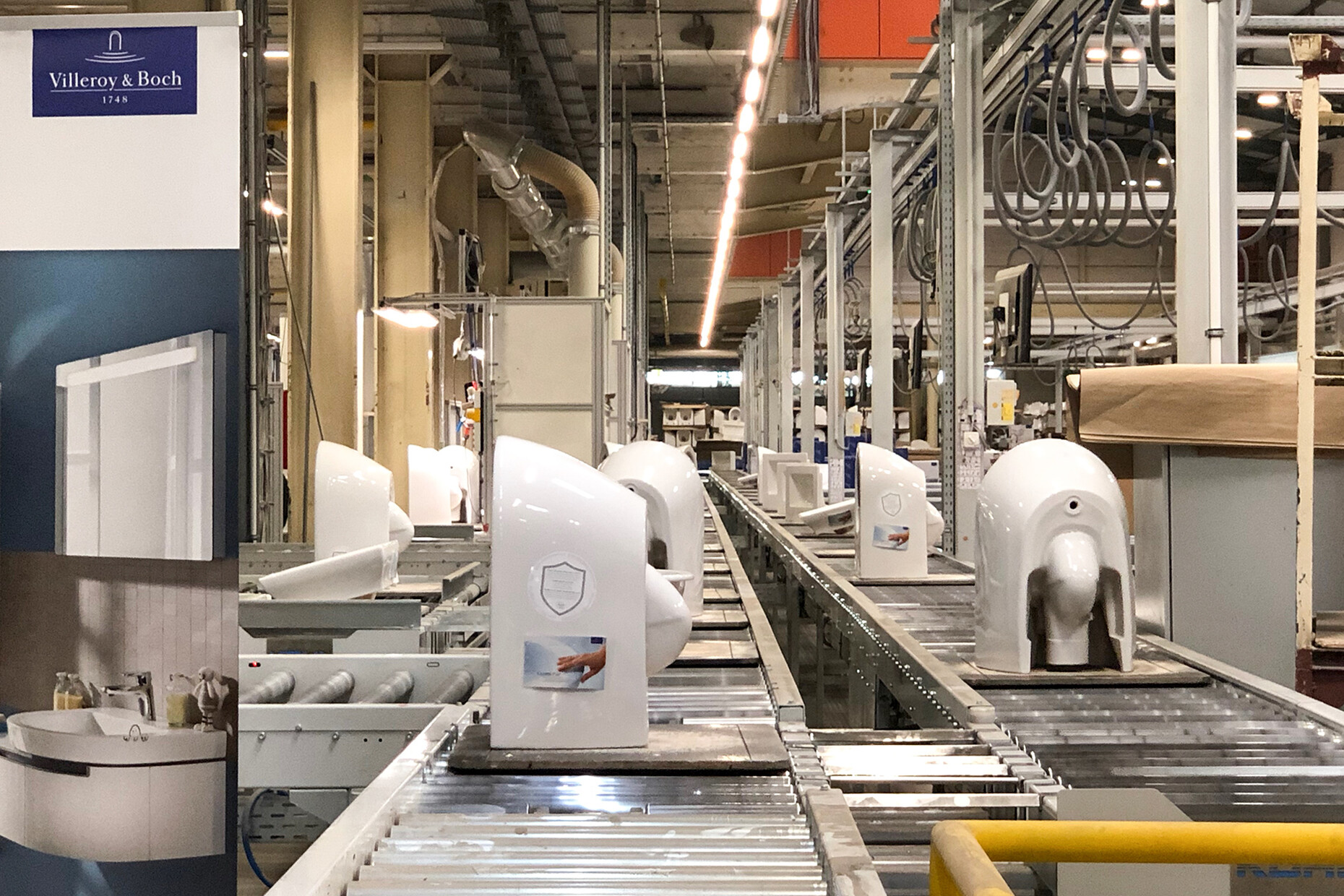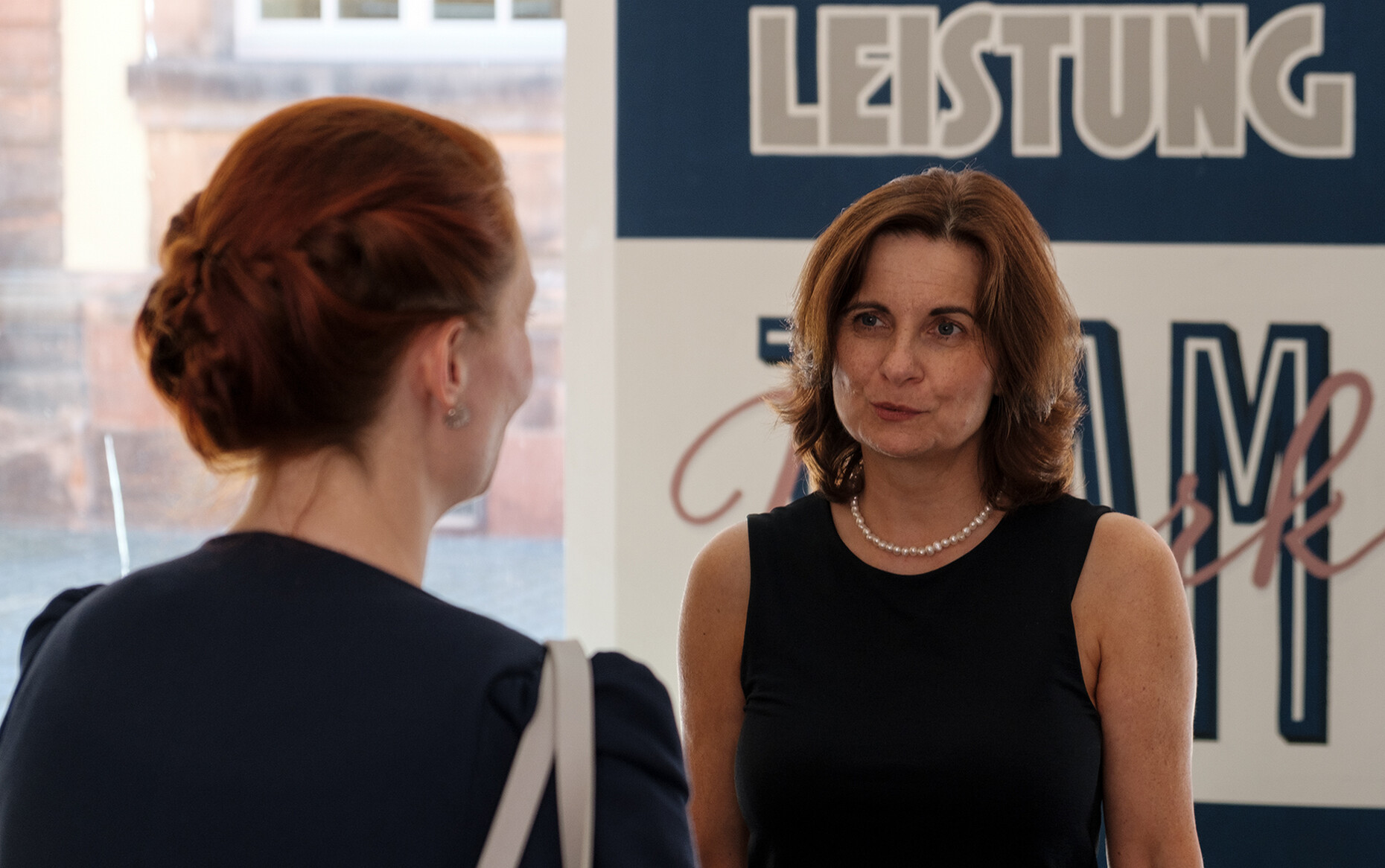STYLEPARK VILLEROY & BOCH
Ceramics in motion
A sign at the entrance to Production reads “Foundry Plant 3.” We don heavy-duty steel-toe boots and make our way to the shop floor. We are met by the hissing of machines. On a metal rack stand two washbasins, unfinished ceramic castings. Fresh from their molds, they are now given their initial polishing. One of the workers plunges a sponge into the water-filled basin next to him and traces the seams in a sequence of flowing movements. All the surfaces need to be smooth for the upcoming drying and glazing processes. A few steps later we are allowed to observe, through a protective grating, as a robotic arm evenly sprays the white glaze onto the dried unfinished castings. One after the other, the castings travel along a conveyor belt into the glazing machine in order to be finished on both the outside and the inside. The machine applies two coats right up into the farthest corners, until the stipulated thickness has been achieved. The glazing covers every inch of the surface where water might go – a sign of Villeroy & Boch product quality – even those spots invisible to the naked eye. After the logo has been affixed in exactly the right place the heat is cranked up for the last stage in the production process, with 1,200 unfinished ceramic castings being placed simultaneously into a kiln which, at its front, resembles a double garage. Its true dimensions only become apparent when we walk along the firing system – traversing the relevant 120 meters we can feel the mounting heat in the air as the temperature in the oven gradually builds to 1,200 degrees. For hours the unfinished castings on their kiln cars are slowly conveyed through the oven and, in the process, are heated up, fired and cooled back down in a controlled atmosphere. In the firing process the unfinished castings level out the uneven reduction in their shapes, since during this phase this shrinks by up to eleven percent.
Random quality control checks follow, with the finished products being put to the acid test. A toilet, for example, must be able to bear a minimum weight of 408 kilograms. So that even filigree shapes would have the familiar stability of ceramics, in recent years Villeroy & Boch has developed a material known as “TitanCeram”: a combination of feldspar, quartz and clay that allows for particularly thin edges whilst boasting all the qualities of high-grade ceramics. Their latest creation is the matte glaze “TitanGlaze” which, with its high-purity crystalline aluminum oxide, offers an especially scratch- and impact-resistant surface. The pair, “TitanCeram” and “TitanGlaze,” make an unbeatable duo.
“Villeroy & Boch’s heart is made of ceramics,” explains Elke Novak, Global Brand Director Product Management Ceramic Retail. And has been for over 270 years now. Established in 1748, what was once a pottery belonging to François Boch rapidly developed into a visionary company which mass-produced ceramic goods. Moreover, Boch’s white earthenware represented an affordable alternative to expensive porcelain. In parallel, his competitor Nicolas Villeroy had succeeded in printing engravings onto porcelain, which represented an enormous time saving in terms of mass production. 1836 saw a merger between the two companies belonging to the Boch and the Villeroy families, which then embarked on the joint mechanized production of ceramics. The splendid premises, the former Benedictine Abbey of Mettlach in which Jean-François Boch once opened a mechanized crockery company, meld the past with the future and still serve as the company headquarters today. Despite the automated manufacturing process, handcrafting remains an important element of the procedure and – quite incidentally – allows every piece to become a one-off. Sustainability has always been a subject close to Villeroy & Boch’s heart – everything from the use of regionally available, natural materials to the recycling of the residual materials left over from production. Furthermore, Villeroy & Boch is currently testing converting the heat from the kiln into electricity and using recycled water.
Even during use, the company’s sanitary ware saves resources. With the water-saving system AquaReduct it was possible to lower the use of water per flush from six to 4.5 liters.
Virtual and individual
Villeroy & Boch’s current innovations include the shower toilet ViClean-I 100. Here, all the technology is built into the ceramics, something which allows for an extremely flat lid design. At first glance the shape of the ViClean-I 100 is indistinguishable from that of an ordinary toilet. But thanks to its rimless DirectFlush technology, the ceramic bowl is flushed without splashing. The non-soiling CeramicPlus surface is easy to clean and the completely integrated shower nozzle is cleansed automatically. The toilet’s functions can be operated by app or remote control.
It is not difficult to imagine the shower toilet ViClean-I 100 and Villeroy&Boch’s other products in your own bathroom thanks to Villeroy&Boch’s free augmented reality app – a virtual 3D view of all the company’s sanitary products which allows everything from washbasins to toilets to be uploaded into your own four walls in real time in every available color, size and model. If you want to re-plan your entire bathroom at the same time, everything from the washbasin to the bathtub can be illustrated graphically with another free tool – the free 3D planner. Furthermore, because this view is accurate in every detail, potential customers can get a good idea of the distances involved and the overall effect of the combined products.
Villeroy & Boch also offers comprehensive planning services especially for architects – from the blueprint and the manual through to the 3D data. “We offer an extensive portfolio that allows creative professionals great scope for customizing solutions,” reports Novak. With the constant improvements to their ceramics and production processes, Villeroy & Boch is playing a part in designing the bathroom of the future. According to Elke Novak, people and their personal sense of wellbeing remain at the heart of all innovations: “Even in future concepts, the bathroom will remain a place of retreat.”
